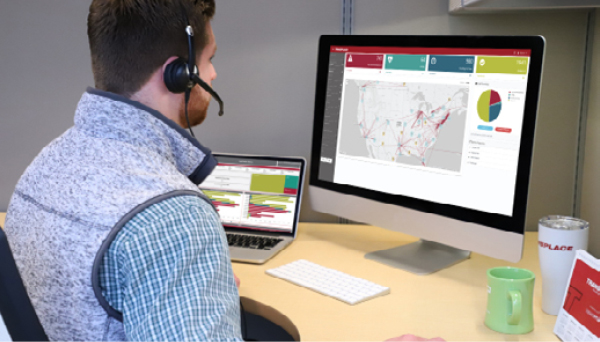Articles
Sponsored

Managing Warehousing Requirements During Peak Periods (Without Committing to Long-term Contracts) – Capacity, LLC
Managing peak period shipment volume is a structural challenge in the U.S. economy. Those preoccupied with executing order fulfillment services spend much of the year thinking about and planning for it. The surge is a three- to four-month peak in first inbound, and then outbound shipments, with overlap. Shipments to retailers come first, followed by […]
Read More
Is Your 3PL Provider Causing You Headaches? Here is What to Look for in a 3PL Partnership – Ascent Global Logistics
It’s 2018, which means that shippers are looking for 3PLs to perform at higher levels than ever before. Because of various market conditions such as the driver shortage, record freight volumes, a volatile trade environment, and increasingly complex retailer delivery requirements, many 3PLs are only offering customers enhanced technology. While technological innovation is necessary, there […]
Read More
Thinking Beyond Home Delivery – SEKO Logistics
Consumer expectations are becoming increasingly demanding, and matching supply to demand is crucial for any successful supply chain. Speed is where it’s at—if you are not moving forward, you are moving backward. As consumers become increasingly savvy online, companies are quickly learning the importance of being at the forefront of change. Providing consumers with all […]
Read More
Transplace TMS Causes Chemical Reaction
Transplace’s technology and expertise help Brenntag streamline operations and realize greater visibility.
Read MoreInnovative Partnership Reduces Claims and Decreases Time in Transit for Home Delivery – SEKO Logistics
An electronics store faced with consistent freight forwarding damage claims turned to SEKO Logistics for an unconventional solution.
Read More
Partnering for Operational Efficiency and Cost Savings – Transplace
Transplace helped a frozen pizza business expand its transportation network to increase operational efficiency and maximize financial savings.
Read More
Load and Expedite – Crane Worldwide Logistics
If you have spent any time in manufacturing logistics you can appreciate the classic problem of, ‘Load and Expedite.’ At Crane Worldwide Logistics®, we see the same thing all over the world with clients in nearly every industry. By not having adequate logistics visibility, setting proper tolerance levels and accurate production forecasting, companies are being […]
Read MoreSolution Generates Cost Savings – Crane Worldwide Logistics
When an industrial manufacturer needed to reduce supply chain costs, they teamed up with Crane Worldwide Logistics for an innovative solution.
Read More
Full-Service Fulfillment Solution Helps E-commerce Company Deliver – Saddle Creek
Saddle Creek helped allheart get orders out quickly, control costs, and keep up with demand spikes.
Read More
Subscription Retailing and Order Fulfillment – Hollingsworth
Q: Why are major retailers going all-in on subscription services? A: Subscription boxes such as Birchbox, Stitch Fix, Blue Apron, and the Dollar Shave Club have become popular new avenues of retail in recent years, and now major retailers are jumping in on the trend. Apparel brands like Old Navy, Gap, and Nordstrom have launched […]
Read More